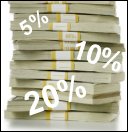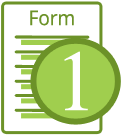March 31, 2011 (Shirley Allen)

The National Association of Realtors (NAR) has weighed in with their response to the “Qualified Residential Mortgage (QRM)” requirements set forth in the risk retention proposal by federal regulators. NAR claims that the high down payment requirement will unnecessarily burden home buyers and significantly impede the economic and housing recovery.
Seven agencies of the federal government jointly released the risk retention proposal mandated in the Dodd-Frank Finance Reform Bill. A QRM is a home loan that would exempt a mortgage lender from a 5 percent retention in each home loan that it originates and is packaged for securitization. If all the loan qualifications meet or exceed the requirements of a QRM, the bank would no longer be required to retain the 5 percent share of the loan and would have no future risk if the borrower should default. One of the requirements for a loan to qualify as a QRM is a 20 percent down payment.
“As the leading advocate for home ownership, NAR supports a reasonable and affordable cash investment requirement coupled with quality credit standards, strong documentation and sound underwriting,” said NAR President Ron Phipps, broker-president of Phipps Realty in Warwick, R.I. “A narrow definition of QRM, with an unnecessarily high down payment requirement, will increase the cost and reduce the availability of mortgage credit, significantly delaying a housing recovery.”
In its press release, NAR says that they believe it was Congress’ intent when passing the Dodd-Frank Finance Reform Bill that a broad QRM exemption from the 5 percent risk retention requirement was to include a wide variety of traditionally safe, well-underwritten products.
NAR is concerned that a narrowly defined QRM will force buyers to seek assistance through government backed entities like the Federal Housing Administration (FHA), which will subsequently require severe tightening of FHA eligibility requirements and higher FHA premiums in order to prevent huge increases in borrowers who would not qualify for a QRM.
Borrowers with less than 20 percent down would still be able to purchase a home, but they could be forced to seek mortgage loans that require higher fees and interest rates. Some industry analysts predict that non-QRM loans would have fees as high as three percentage points above a conforming QRM loan, which could possibly disqualify as many as one-third of all borrowers if implemented today.
“Saving the necessary down payment has always been the principal obstacle to buyers seeking to purchase their first home. Proposals requiring high down payments will only drive more borrowers to FHA, increase costs for borrowers by raising interest rates and fees, and effectively price many eligible borrowers out of the housing market,” said Phipps. “We strongly urge the regulators to consider the negative consequences of setting onerous limits on the availability of credit.”
The Mortgage Bankers Association also responded by stating, “Related to risk retention for residential mortgages and the qualified residential mortgage (QRM) exemption, we do have concerns about the rigid and highly prescriptive nature of the proposed rule. We believe that such a narrow construct of the risk retention exemption would limit mortgage opportunities for qualified borrowers more than it would reduce the number of problem loans. Further, if the QRM were to be enacted as proposed, it could dramatically limit the role of independent mortgage banks and community lenders, who either don’t have the balance sheet capacity to hold loans or the capital to hold in reserve as retained risk, but have long histories of originating safe and well-underwritten mortgages.”
At this time, while Freddie Mac and Fannie Mae are under government conservatorship, they will be exempt from the QRM requirement, as will FHA and VA loans, which altogether currently make up 87 percent of all mortgage loans originated. If implemented today, QRM would only apply to approximately 13 percent of all mortgage loans originated.
Tags: NAR, risk retention proposal, down payment requirement, Dodd-Frank, interest rate, fees, FHA, Freddie Mac, Fannie Mae, VA, mortgage credit, housing recovery, credit standards
Sources:
NAR
LoanRateUpdate
LoanRateUpdate
Saveforhouse (Image)




